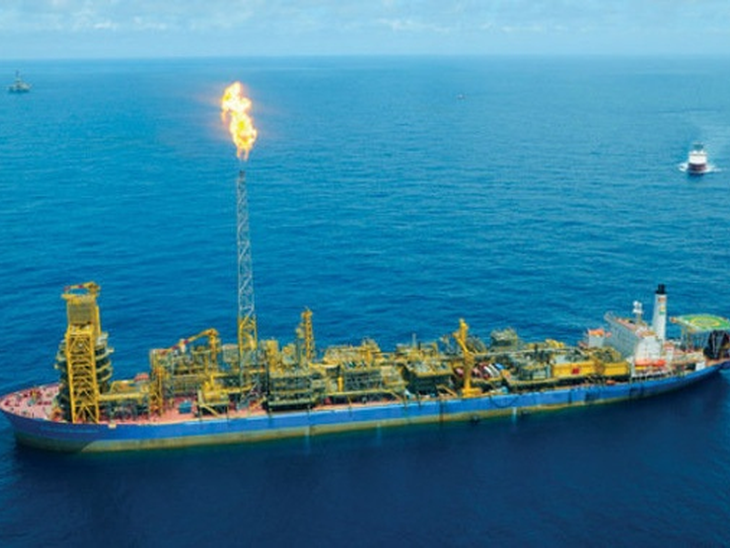
T&B Petroleum/Press Office ANP

In January 2019, Brazil's oil and gas production totaled 3,343 million barrels of oil equivalent per day, with 2,631 million barrels of oil per day (bbl / d) and 113 million cubic meters of natural gas per day.
Oil production in the period decreased by 2.2% compared to the previous month and increased by 0.6% compared to January 2018. Natural gas production decreased by 0.4% in comparison with the previous month and an increase of 0.7% compared to the same month of 2018.
The main reason for the fall compared to December were the maintenance stops at the P-74 and FPSO Cidade de São Paulo platforms, respectively in the Búzios and Sapinhoá fields.
January production data is available on the Monthly Bulletin of Oil and Natural Gas Production(http://www.anp.gov.br/publicacoes/boletins-anp/2395-boletim-mensal-da-producao-de-petroleo-e-gas-natural).
Pre-salt
Pre-salt production in January totaled 1.837 million boe / d, a decrease of 2.7% over the previous month. 1,456 million barrels of oil per day and 61.5 million cubic meters of natural gas per day were produced through 90 wells. The pre-salt share in total national production in January was 54.9%.
The pre-salt wells are those whose production is carried out in the geological horizon called pre-salt, in fields located in the area defined in item IV of caput of article 2 of Law 12,351 / 2010.
Use of natural gas
The use of natural gas in Brazil in January reached 95% of the total volume produced. 60.3 million cubic meters per day were made available to the market.
Gas flaring totaled 5.6 million cubic meters per day, an increase of 21.4% compared to the previous month and 40.4% compared to the same month in 2018. The main reason for the increase was the burning held in the field of Lapa. Due to operational issues and impossibility of reinjection of the natural gas produced, it was allowed to burn all the natural gas produced by the field.
Producer Fields
The Lula field, in the Santos Basin, was the largest producer of oil and natural gas. It produced, on average, 889 thousand bbl / d of oil and 38.3 million m3 / d of natural gas. Marine fields produced 95.9% of oil and 82.1% of natural gas. The production occurred in 7,360 wells, 717 seafarers and 6,643 terrestrial.
The fields operated by Petrobras produced 93.7% of oil and natural gas.
Estreito, in the Potiguar Basin, had the largest number of producing wells: 1,130. Marlim Sul, in the Campos Basin, was the maritime field with the largest number of producing wells: 87.
The Maricá FPSO Platform, producing in the Lula field by means of seven interconnected wells, produced 150,100 barrels per day and was the facility with the largest oil production. The Arara Azul plant, producing in the fields of Arara Azul, Araracanga, Carapanaúba, Cupiúba, Urucu River and Sudoeste Urucu, through 39 interconnected wells, produced 8.5 million m3 / Natural.
Other information
In January 2019, 307 concession areas, one onerous assignment area and five sharing areas, operated by 32 companies, were responsible for domestic production. Of these, 76 are maritime and 237 are terrestrial. Of the total of the producing areas, 13 are related to contracts of areas containing marginal accumulations.
The average API grade was 27.2, with 37.9% of the production considered light oil (> = 31 ° API), 48.2% medium oil (> = 22 API and <31 API) and 13.9% oil heavy (<22 API).
The mature terrestrial basins (fields / long-term tests of the Espírito Santo, Potiguar, Recôncavo, Sergipe and Alagoas basins) produced 114 thousand boe / d, of which 89.2 thousand bbl / d of oil and 3.9 million m3 / d of natural gas. Of this total, 107,300 barrels of oil equivalent per day were produced by Petrobras and 6,700 boe / d for concessions not operated by Petrobras, with 358 boe / d in Alagoas, 2,991 boe / d in Bahia, 29 boe / d in Espírito Santo, 3,122 boe / d in Rio Grande do Norte and 203 boe / d in Sergipe.

Contact us